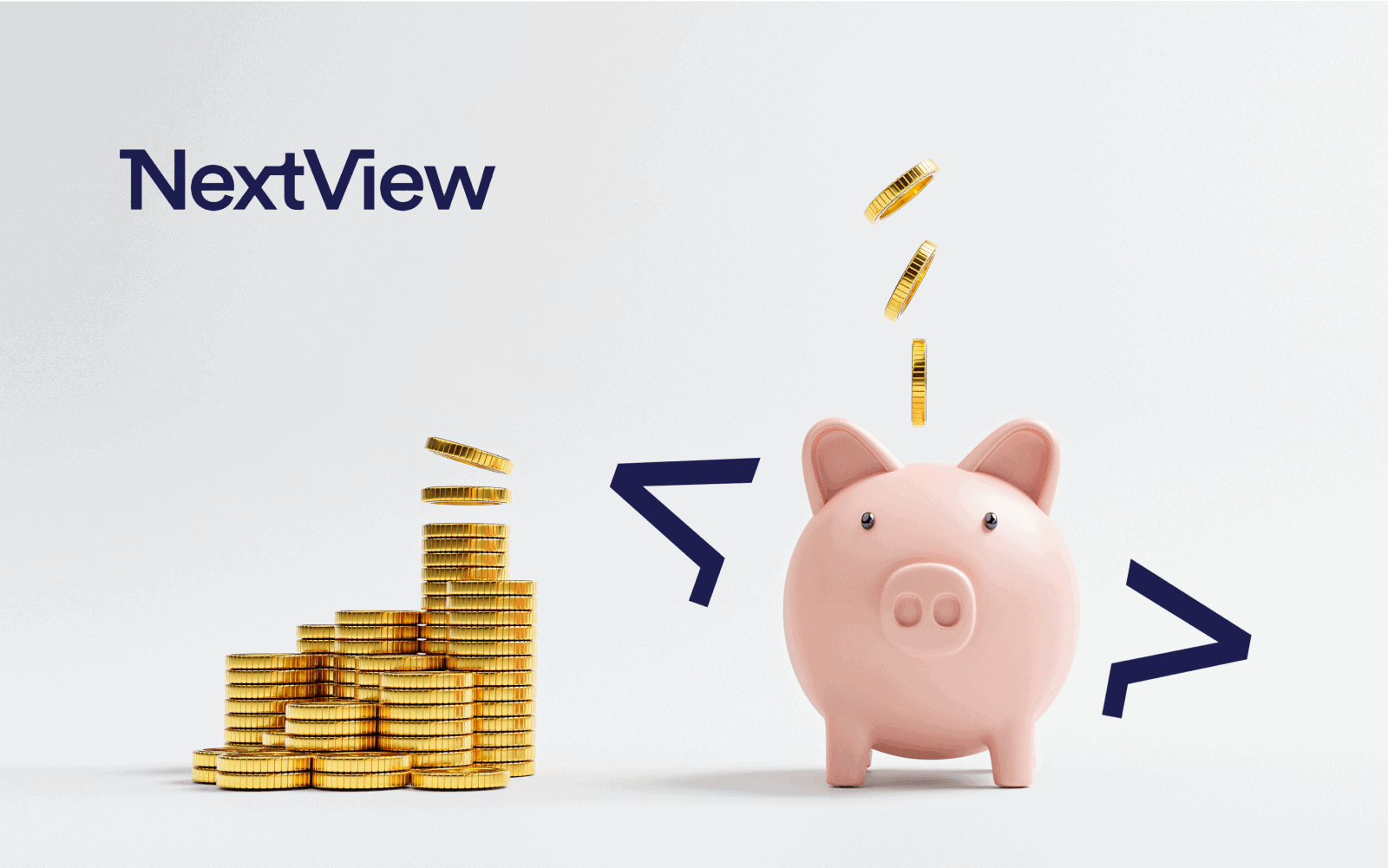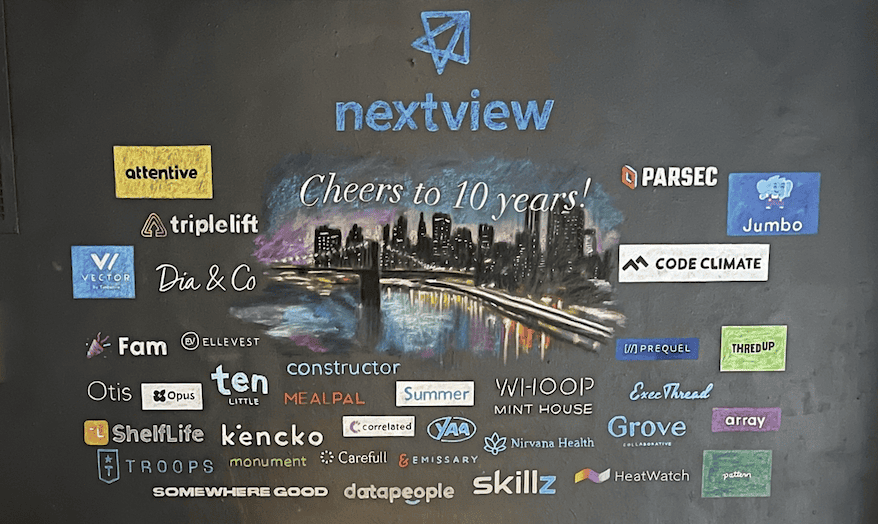


Where We Are Investing in 2024
This is the time of year where investors talk about what they are focused on. And in light of the rapid emergence of generative AI, I’m hearing more and more people asking about whether our focus has changed.
The TLDR is that we are focusing on exactly the same things that we have been focused on for the past 5+ years. In a nutshell, NextView invests in the digital redesign of the Everyday Economy. These are software-driven companies that deliver transformative end user experiences to large populations of people. This can be in commerce (Bobbie), consumer applications (WHOOP, Arc), healthcare (Devoted), B2B2C (Attentive), enabling technologies (Zitara, Samacare), and end user business applications (Parsec, Drift).
But I think it would be helpful in 2024 to frame our focus in the context of the current landscape, given the uncertainties, innovations, and gyrations we are all experiencing. So, buckle up and here we go.
Products, Problems, and People
What’s always made us unusual as a firm is that we don’t have the typical answer to the question of “focus”. 90%+ of VC’s will tell you that their focus is either a technology or a space. For example:
Technologies: AI, IOT, Cloud, Blockchain
Areas: Vertical SaaS, Crypto, Security, Consumer, Deep Tech
There is nothing wrong with this approach, but it has never been native for us. As investors, we have always been much more product and solution-oriented vs. being enamored by technology. If you listen in on a pitch, you’ll hear us trying to deeply understand the product being created, how users interact with it, how the roadmap unlocks future opportunity, and what foundational problem is being solved. Often, the best solution does not leverage the fanciest technology, or does so in an orthogonal way. We don’t like to try to jam square technology pegs into round holes.
Similarly, we’ve always had more interest in seeking solutions to problems vs. canvassing a particular space. For example, our exploration into the challenges that arise from the aging US population has led us to surround the problem space with several companies in different domains like fintech (Carefull), care delivery (Mighty Health), commerce (Carewell), and Medicare Advantage (Devoted). This is why our firm is quite multi-disciplinary, and why my Partners and I often lead investments in overlapping areas.
Finally, as a seed and pre-seed investor, we tend to be largely people-first. Our goal is to get to know the most talented founders and aspiring future founders as early as possible, and find ways to partner with them over many years and perhaps multiple companies. Ultimately, it is the entrepreneurs that pull us into spaces that we never expected and allow us to join their remarkable adventures.
Innovation Waves
This is often said but worth repeating: innovation waves tend to move from a period of infrastructure building to the development of enabling platforms and ultimately to applications. For example, the mobile wave was enabled by core telecom infrastructure and high-speed wireless capabilities as well as the device infrastructure of smartphones. Enabling technologies like app stores, monetization platforms, and developer frameworks enabled the birth of thousands of applications that have permeated all aspects of personal and professional life.
Of course, the progression through these waves isn’t as tidy as I made it sound. Different innovation waves overlap and compound one another (cloud + mobile for example). Some applications become so ubiquitous that they themselves become platforms or even can be considered underlying infrastructure for another wave. For example, Facebook was an application enabled by the internet, but its social graph and reach became a platform for customer acquisition, personalization, and other applications that were built upon it.
Generally, we have been largely application-focused investors at NextView. We find that the infrastructure layer isn’t terribly native to us and tends to have capital intensity dynamics that don’t lend themselves well to seed-focused funds. Although we will occasionally invest in enabling technologies and platforms, I often say the first step in becoming a platform is to build an incredible application. This earns you the right to do more. I also think that application investing is a bit more evergreen, as the first and second-order effects of any major technology wave are realized over decades.
Replacement and Re-Invention
When a new innovation wave occurs, there are broadly two types of opportunities that arise.
The first are “replacement” opportunities. This is re-imagining an existing solution or workflow in a way that utilizes the new technology from the ground up. An overly simplified example would be Workday, which disrupted an existing category of HR software built on the cloud, replacing existing HCM spend at enterprises and stealing share from SuccessFactors and others.
Replacement is a great strategy. It can also yield great outcomes. Remember that Workday went public at a $7B+ market cap. And that was 12 years ago! In the current wave of AI innovation, it’s fair to think that every category of software is going to be replaced by an AI-Native product. The question will be whether new players can get there first or if legacy players can leverage their installed base and re-invent themselves for the new wave.
The second type of opportunities are re-invention opportunities. These companies address core needs in totally different ways thanks to the new technologies that have emerged. Uber didn’t sell better dispatch software to the taxi industry; it reshaped the concept of on-demand transportation (and on-demand services) in a totally new way. These opportunities often massively expand markets or re-allocate the value chain in a way that fundamentally changes the everyday experience in that category.
What’s exciting is that technology’s scope of impact tends to expand as new waves emerge. Software used to be the domain of CIOs, but that has gradually expanded to penetrate more and more aspects of everyday life. The second-order effects of super-technologies mean that their implications create new problems and more room for entrepreneurs to maneuver and build important companies. The breadth and scale of potential large businesses grows with each subsequent wave, and more and more of the Everyday Economy becomes a realistic target for replacement for re-invention.
Five Kinds of AI Companies
Every company today is positioning itself as an AI company. In my view, there are five flavors of companies, whether or not their URL ends in a dot AI 🙂
- AI native teams. These companies are basically just building software to solve problems. But from the beginning, they are leveraging the best of what AI has to offer to create efficiencies and new product capabilities. These might be companies that are replacement products, or are entering markets that are slow to adopt software. Founders in this category may not even consider themselves AI companies because it’s just a given that the best available technology ought to be utilized in the areas where it makes practical sense.
- AI core infrastructure. Even though we are moving past the infrastructure stage of this AI wave, that does not mean that new infrastructure opportunities aren’t out there, especially in more specialized verticals where current models fail to perform.
- AI Picks and Shovels. These are AI companies solving AI problems. These are the enabling software and platforms that will make this whole category really work in the coming decades. For better or worse, I find that VCs tend to love these types of businesses. I think it makes them more comfortable and has the perception of being lower risk. But I also very much remember the hundreds of blockchain picks and shovels businesses that I saw that were all solving problems created by other companies tackling a non-existent end market. In this case, I think the end market is clearly starting to come to fruition, but there is still the risk that some of these opportunities are transient in nature.
- AI Enabled Applications. These companies are doing new stuff that can only be done effectively because AI exists. I believe that there will be a Cambrian explosion of these companies akin to what we saw during the era of Web2.0. While it’s kind of scary to wade into this fray, this is also where the most plentiful opportunities are likely to reside. The key here is to leverage deep domain insight to solve real problems and to create enough defensibility to thrive as an independent company.
- AGI Futurists. These companies are a bit more out of the box and are building for a world where true human-level AGI exists. In this world, AI doesn’t just look like another leap in software, but something bigger and more profound. If AGI truly is around the corner, the way we think about software products and the structure of work and life overall might be very very different. Some founders are eagerly building towards this future, knowing full well that it’s extremely unpredictable and this future may not come to fruition for a very long time.
So Where is NextView Investing?
So, back to the original question, where are we investing at NextView?
To repeat from the opening paragraph, we invest in software-driven companies that deliver transformative end-user experiences to large populations of people. This manifests itself in consumer, B2B, Health, and other mass market categories that form the Everyday Economy.
We deeply believe that AI will be a prime driver of a large majority of the opportunities that we pursue. We’ll consider all five of the flavors of companies above, although we tend to gravitate more towards applications and enabling technologies over infrastructure.
But our style is to focus on the fundamental problems being addressed and the products that come to life much more than the underlying technological foundation. We love founders that combine entrepreneurial vigor with deep and unique insight into areas of the Everyday Economy that others miss or underestimate.
Thanks for reading. If this resonates, we’d love to meet you!




